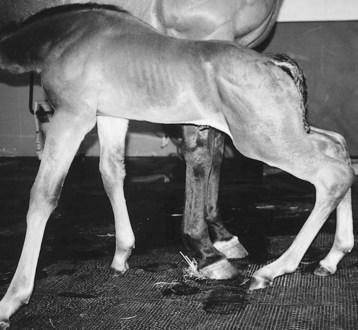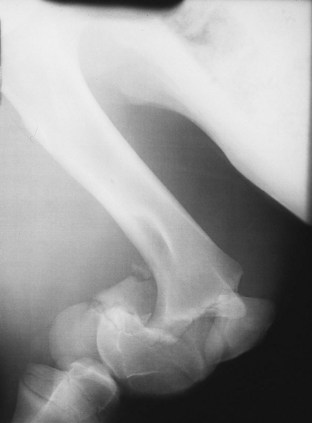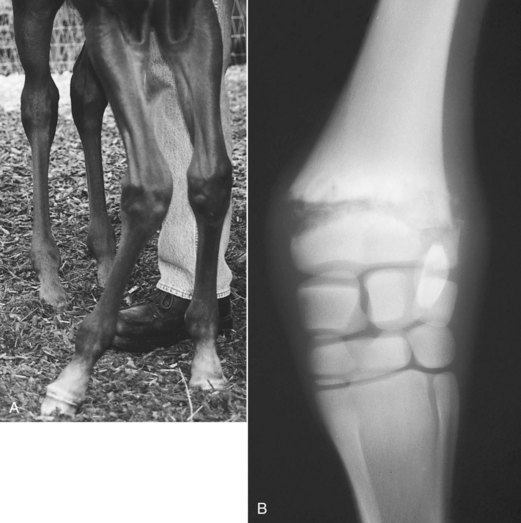Chapter 128Lameness in Foals
Noninfectious Causes of Lameness
Lameness resulting from external trauma varies with the area involved and the severity of the injury. Essentially any portion of the skeletal system is prone to injury. Traumatic injuries resulting in lameness are common but fortunately self-limiting in most instances. Boisterous activity, coupled with a hazardous environment, places a foal at an increased risk of sustaining injury compared with an adult horse. Trauma from other horses (a mare kicking a foal or collision injuries with other foals) is a common cause of lameness. Impact with stationary objects while a foal is being chased may result in serious injury. Internal trauma includes overexertion injuries, such as a foal running excessively with a mare or being chased, resulting in fracture of the proximal sesamoid bones (PSBs), or rupture of the suspensory apparatus or other soft tissue structures (Figure 128-1). Common fractures in foals include those involving the long bones, physes, PSBs, carpal and tarsal cuboidal bones, and the distal phalanx.1,2,5,6
Fractures of Long Bones
Clinical evaluation may be diagnostic in foals with lameness of traumatic origin. Unstable fractures or severe soft tissue injuries cause obvious, immediate clinical signs. If a fracture is suspected, radiographs are necessary to confirm the diagnosis and determine the severity of the injury (Figure 128-2).
Fractures of the Physes
Physeal fractures are common because physeal bone is weak compared with diaphyseal bone. Diagnosis of physeal injuries is made on clinical and radiological findings (Figure 128-3). Clinical signs include varying degree of lameness, pain on palpation of the injured area, swelling, and possibly instability of the limb or angular deviation of the limb distal to the fracture. The primary differential diagnosis for a stable physeal fracture is infectious physitis.
Cuboidal Bone Injury
Injury to the cuboidal bones of the tarsus or carpus often is associated with failure or delay of endochondral ossification in premature or dysmature neonates.5,6 Crushing and malformation of the soft cartilaginous precursors of the cuboidal bones result in osteoarthritis and varying degrees of lameness (Figure 128-4
Stay updated, free articles. Join our Telegram channel

Full access? Get Clinical Tree





